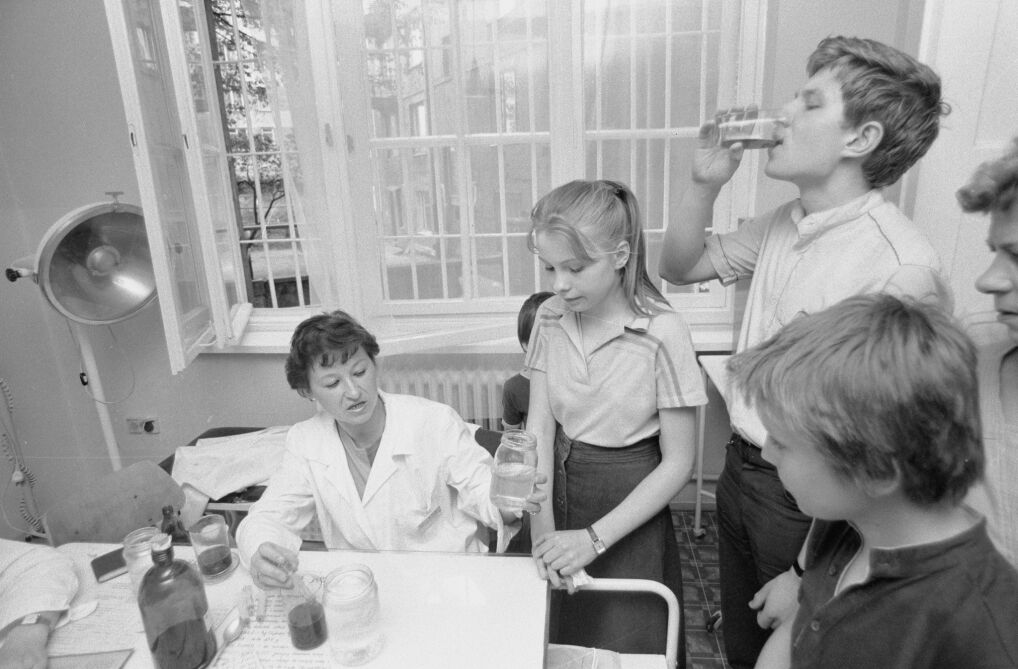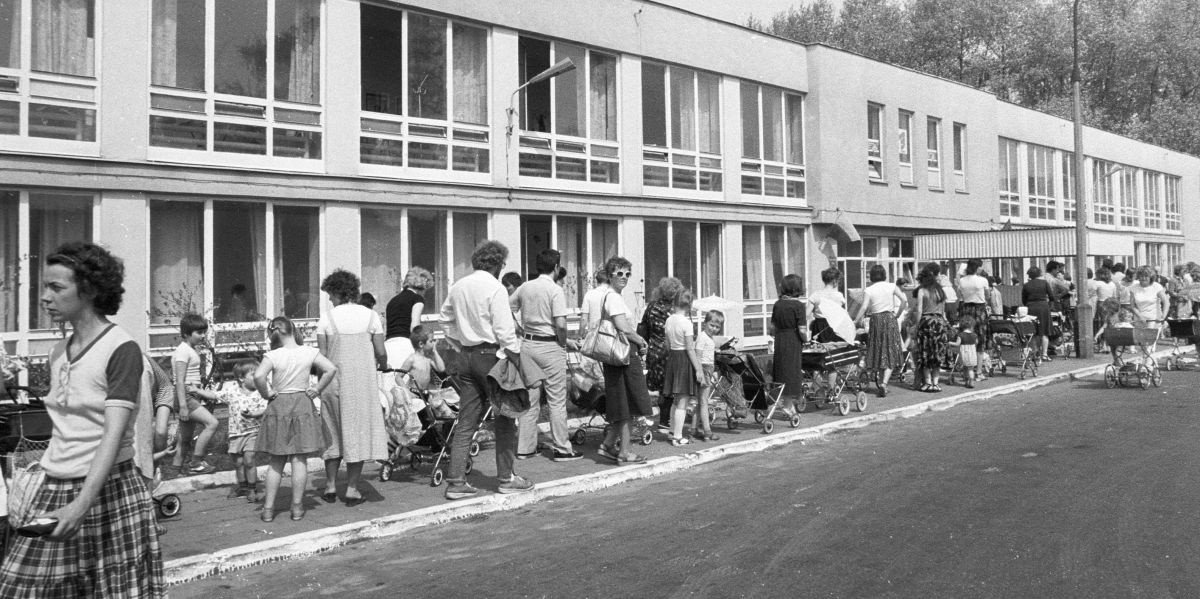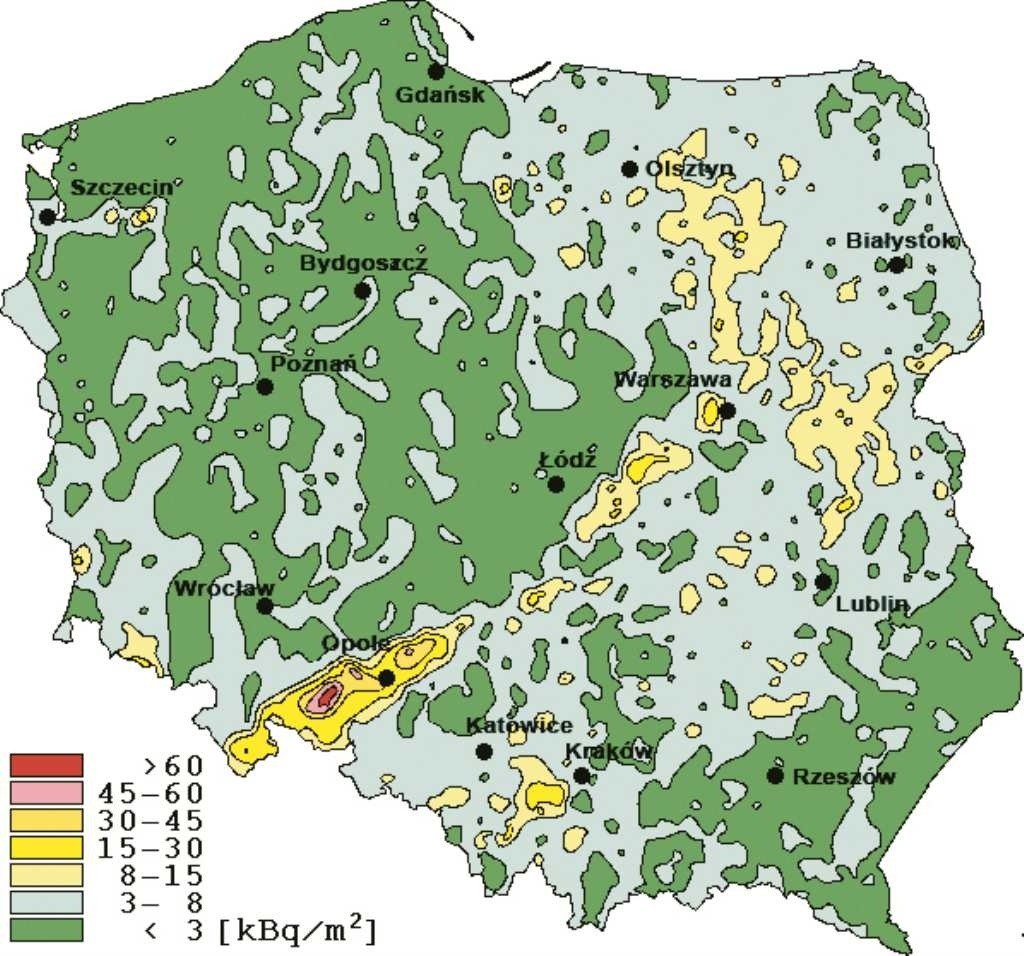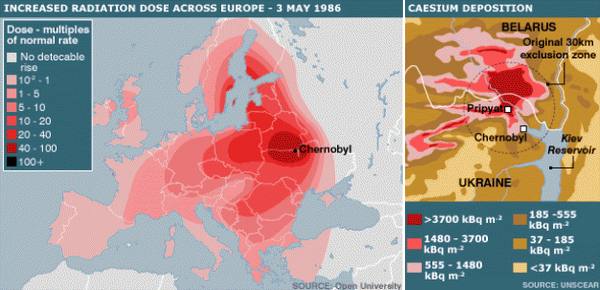Post by Bonobo on May 1, 2019 16:12:18 GMT 1
in 1986, a Soviet nuclear plant exploded and radiation covered all Europe. Poland ws affected too.
www.irishtimes.com/opinion/letters/fallout-from-chernobyl-in-poland-1.585007
Naturally, the former Soviet republics of Belarus and Ukraine are particularly in mind. But what about other countries? My native Poland was the third country profoundly affected by Chernobyl.
In April 1986 I went to Poland to visit my elderly parents who lived in Warsaw.
I travelled from Dublin by ferry and train via London and Paris. It’s almost 25 years ago and yet those few days in April 1986 are as vivid in my memory as if it was yesterday.
It was a glorious late-spring time, sunny, warm, blue sky, light breeze. On Sunday evening, April 27th, the wind became very strong and changed direction. I slept badly that night, waking several times and sweating. Many people had similar feelings. “It must be that hot eastern wind”, people commented.
Daffodils and tulips – in full bloom a day before – faded overnight.
We did not know that a radioactive cloud was passing over our country.
My sister, aged 40 at the time, a scientist in the field of fishery and hydrobiology, spent the day working on lakes in north-east Poland, about 40 miles from the former USSR border. It was disclosed later that on that day, Monday , April 28th, 1986, the radioactivity in this area was 500 times higher than “normal”.
There was strict censorship in the [then] communist Poland and not a word of information related to the Chernobyl disaster was issued. The people were kept completely in the dark.
Between Monday and Tuesday the radioactive cloud reached Sweden and the world knew.
On April 29th, the evening news on Polish TV was interrupted by a special communiqué from Moscow. “There was an accident in Ukraine nuclear power-station. The victims have been assisted. All is under control”. On April 30th, the same three-line statement appeared in all the daily papers.
But our telephone started to ring. Did we know that in all schools children have been given an iodine mixture? That an order was issued to the farmers to keep their cattle in, and not to feed farm animals with fresh grass? We should drink a glass of water mixed with a tincture of iodine in such-and-such proportion! The local chemist shop was packed and a long gloomy queue stood outside.
“Shortage of tincture of iodine, all sold out” – a perplexed, tired looking lady chemist announced. (Iodine tablets did not exist in Poland).
My parents had a small bottle of iodine tincture at home. They had bought it in Dublin, in 1985. We shared it with our neighbours.
The next days were spent at home with our ears close to the radio to catch the BBC and the Free Europe news; both stations were jammed by the Polish authorities.
Polish TV kept showing a “happy” May Day parade in Kiev. Ten million Polish children continued their normal school routine getting plenty of “fresh air” in their usual sport and outdoor exercise activities.
Ten days later I was travelling by train to Vienna. At the Austrian border my shoes and coat were checked with a Geiger counter by the Austrian police.
On the other side of the then “Iron Curtain” I was immediately impressed with the amount of information – advice, warnings, guidance etc – publicly displayed.
Ten years later, according to a 1996 medical survey, we discovered that about 22 per cent of Polish youth suffered some form of thyroid gland disorder (tumours, nodules, etc); and up to 40 per cent in the north-eastern part of Poland.
My sister developed cancer, and, knowing the cancer type, she had no doubt it was linked to the Chernobyl radiation. March 18th marked the 10th anniversary of her death. Maria Bninska PhD (née Dangel) was an academic scientist with a degree of Doctor in Agricultural Sciences, specialisation in fisheries. She worked together with Dr Christopher Moriarty at EIFAC (European Inland Fisheries Advisory Commission) and she loved Ireland. – Yours, etc,
HANNA DANGEL-DOWLING,
Woodley Park,
Dundrum,
Dublin 14.






www.tvn24.pl/magazyn-tvn24/tylko-bez-paniki-pijcie-plyn-lugola-to-radziecka-coca-cola,213,3650
www.amjmed.com/article/0002-9343(93)90089-8/fulltext

www.irishtimes.com/opinion/letters/fallout-from-chernobyl-in-poland-1.585007
Naturally, the former Soviet republics of Belarus and Ukraine are particularly in mind. But what about other countries? My native Poland was the third country profoundly affected by Chernobyl.
In April 1986 I went to Poland to visit my elderly parents who lived in Warsaw.
I travelled from Dublin by ferry and train via London and Paris. It’s almost 25 years ago and yet those few days in April 1986 are as vivid in my memory as if it was yesterday.
It was a glorious late-spring time, sunny, warm, blue sky, light breeze. On Sunday evening, April 27th, the wind became very strong and changed direction. I slept badly that night, waking several times and sweating. Many people had similar feelings. “It must be that hot eastern wind”, people commented.
Daffodils and tulips – in full bloom a day before – faded overnight.
We did not know that a radioactive cloud was passing over our country.
My sister, aged 40 at the time, a scientist in the field of fishery and hydrobiology, spent the day working on lakes in north-east Poland, about 40 miles from the former USSR border. It was disclosed later that on that day, Monday , April 28th, 1986, the radioactivity in this area was 500 times higher than “normal”.
There was strict censorship in the [then] communist Poland and not a word of information related to the Chernobyl disaster was issued. The people were kept completely in the dark.
Between Monday and Tuesday the radioactive cloud reached Sweden and the world knew.
On April 29th, the evening news on Polish TV was interrupted by a special communiqué from Moscow. “There was an accident in Ukraine nuclear power-station. The victims have been assisted. All is under control”. On April 30th, the same three-line statement appeared in all the daily papers.
But our telephone started to ring. Did we know that in all schools children have been given an iodine mixture? That an order was issued to the farmers to keep their cattle in, and not to feed farm animals with fresh grass? We should drink a glass of water mixed with a tincture of iodine in such-and-such proportion! The local chemist shop was packed and a long gloomy queue stood outside.
“Shortage of tincture of iodine, all sold out” – a perplexed, tired looking lady chemist announced. (Iodine tablets did not exist in Poland).
My parents had a small bottle of iodine tincture at home. They had bought it in Dublin, in 1985. We shared it with our neighbours.
The next days were spent at home with our ears close to the radio to catch the BBC and the Free Europe news; both stations were jammed by the Polish authorities.
Polish TV kept showing a “happy” May Day parade in Kiev. Ten million Polish children continued their normal school routine getting plenty of “fresh air” in their usual sport and outdoor exercise activities.
Ten days later I was travelling by train to Vienna. At the Austrian border my shoes and coat were checked with a Geiger counter by the Austrian police.
On the other side of the then “Iron Curtain” I was immediately impressed with the amount of information – advice, warnings, guidance etc – publicly displayed.
Ten years later, according to a 1996 medical survey, we discovered that about 22 per cent of Polish youth suffered some form of thyroid gland disorder (tumours, nodules, etc); and up to 40 per cent in the north-eastern part of Poland.
My sister developed cancer, and, knowing the cancer type, she had no doubt it was linked to the Chernobyl radiation. March 18th marked the 10th anniversary of her death. Maria Bninska PhD (née Dangel) was an academic scientist with a degree of Doctor in Agricultural Sciences, specialisation in fisheries. She worked together with Dr Christopher Moriarty at EIFAC (European Inland Fisheries Advisory Commission) and she loved Ireland. – Yours, etc,
HANNA DANGEL-DOWLING,
Woodley Park,
Dundrum,
Dublin 14.






www.tvn24.pl/magazyn-tvn24/tylko-bez-paniki-pijcie-plyn-lugola-to-radziecka-coca-cola,213,3650
www.amjmed.com/article/0002-9343(93)90089-8/fulltext








